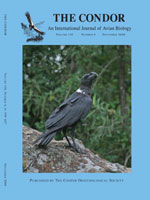Characteristics of successful vs. unsuccessful nest sites are likely to vary over time and space in response to habitat changes. I used the Thorn-tailed Rayadito (Aphrastura spinicauda, Furnariidae), a cavity-nesting species endemic to the temperate rainforest of southern South America, as a model species to determine if territory use and nest-tree selection, and associated consequences for fitness, varied spatially in response to human-driven habitat changes. I established two 10 ha plots in each of three forest habitats that differed in structure and isolation: connected old-growth forest, connected logged forest, and isolated logged fragments. Characteristics of trees used for nesting varied among forest types, but nest success did not. In connected forests (old-growth and logged forest), snags were used more often than expected based on their availability. Nest survival models identified type of tree (snag vs. live tree) and epiphyte cover of trees as the variables with the strongest effects on daily nest survival. Nests in snags and with less epiphyte cover were more successful than nests in live trees. These results support an adaptive nest-site choice in this species. In isolated logged fragments, use of nest trees was proportional to availability, with smaller trees and different tree species used for nesting, suggesting behavioral plasticity in nest-site selection. Territories were similar among forest types and were characterized by a dense understory and more large trees and snags than unused areas. This study provides evidence for consistent territory use but spatially variable nest-tree selection in response to ecological gradients produced by human activities.
How to translate text using browser tools
1 November 2008
Spatial Variation in Nest-Site Selection by a Secondary Cavity-Nesting Bird in a Human-Altered Landscape
Cintia Cornelius
ACCESS THE FULL ARTICLE

The Condor
Vol. 110 • No. 4
November 2008
Vol. 110 • No. 4
November 2008
Aphrastura spinicauda
cavity-nester
Chile
forest fragmentation
human-modified landscapes
nest-site selection
south-temperate rainforest




